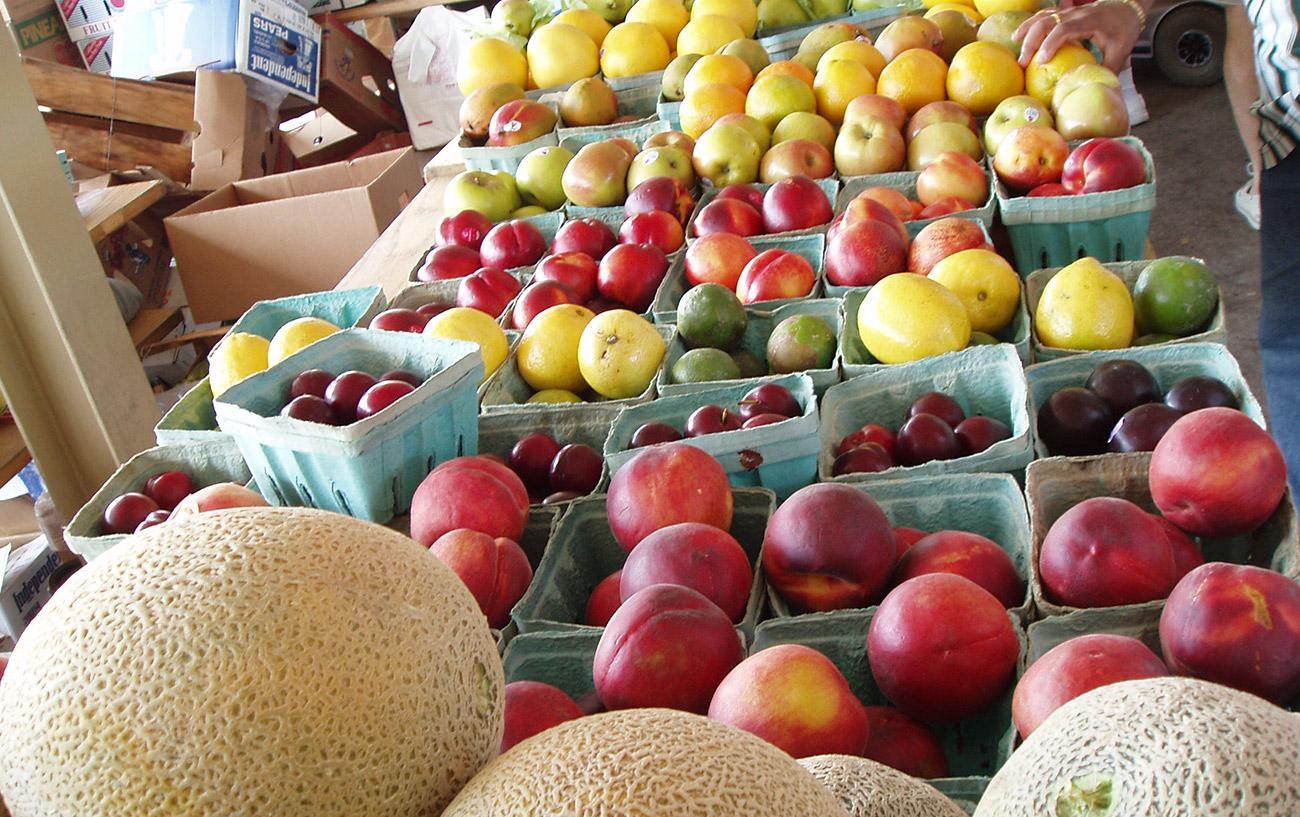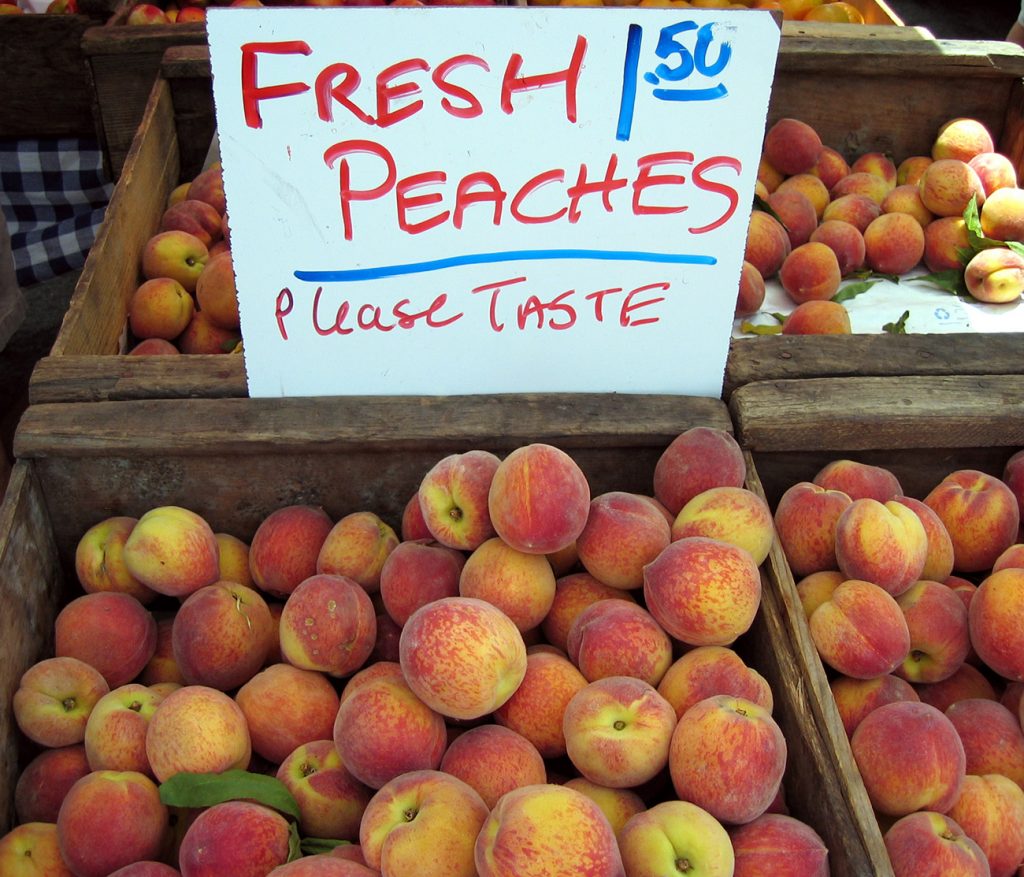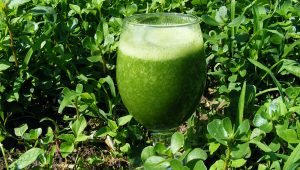All Organic, All the Time

Organic food. That was the topic of my most recently assigned blog post. But, as usual, I couldn’t take this topic and just sit with it. I needed to change it, edit it, jazz it up! So, I determined that eating an all-organic diet and writing about the experience was the way to go.
My initial thoughts: How will this affect my wallet, my mood, my ability to eat on the go? With a busy schedule and two young daughters, implementing an all-organic diet seemed impossible before I even started.
I decided to take a field trip to the mothership of organic meals—Whole Foods. It was glorious! Everything is so pretty, bright, shiny, well-placed. I equate it to the shoe display at Lord & Taylor. I wanted to take every shoe … I mean, every apple, home with me. Unlike my typical shopping trips, this time I just walked around, checked out prices, made lists, and thought about what I could buy and consume that would have the most impact on my diet.
I was concerned that suddenly starting an all-organic diet and going from 0 to 60 would be difficult, not to mention pricey. So I began with some basics and tried to ensure that most of my meals were organic. If my olive oil wasn’t, I’d have to let it go.
I also had to investigate the type of organic products I was considering. I had heard that sometimes items are marked “organic” when in fact they actually aren’t. It was a good reminder to read food labels and dig deeper to figure out what I’m putting in my body.
According to the United States Department of Agriculture, true organic products must meet a certain number of criteria and also have strict production and labeling requirements, including the following:
- Produced without excluded methods (e.g., genetic engineering, ionizing radiation, or sewage sludge)
- Produced using allowed substances
- Overseen by a USDA National Organic Program-authorized certifying agent, following all USDA organic regulations

Another good rule of thumb is to look for the USDA Organic logo on the foods you choose.
When trying to eat organic, you’re not only limited to Whole Foods. There are a number of other choices, especially here in the Capital Region, where you can purchase your feast. One site I did well with was Field Goods, an online organic market that sells fruits, vegetables, breads, grains, and dairy. You simply set up an account and choose the items from that week’s selection, put them in your basket, and check out. Your order is then delivered to a pre-determined private or public location for pick-up, such as a local business, library, school, etc. One of the best features is that you can start and stop your membership on a weekly basis, making it affordable.

Another option is farmers’ markets. The prices are often lower than what you might find in a store. I am partial to the Troy Farmers’ Market, which has more than 100 vendors and operates year-round between River Street and the Troy Atrium.
Finally, we have Trader Joe’s, a great, lower-cost option for some organic yumminess and prepared foods; the Honest Weight Food Co-Op in Albany; and Aldi’s, which offers 62 organic food options that can help you eat well and save money.
Armed with my organic fruits, veggies, grains, and dairy products, I set out to try and incorporate as many of these foods into my diet as possible. I found that eating organic wasn’t hard; it was the planning and meal prep that became the real challenge. If you are trying to stick to any particular diet, you need to be prepared. For someone who attends a lot of breakfast, lunch, and dinner meetings, as well as evening events, it was hard to find organic food. However, once I established a few ground rules for myself, things started to fall into place. Below is a sampling of what I was  eating to stay on track.
eating to stay on track.
Morning A great way to incorporate lots of good, nutritious, organic goodies into my diet was by starting every day with a smoothie. I added Olivia’s organic greens, organic coconut milk, Wyman’s organic frozen blueberries, an organic banana, a ¼ teaspoon of organic vanilla extract, a teaspoon of organic powdered peanut butter (I also used organic almond butter, but the powdered peanut butter has fewer calories), and some ice chips. I also purchased a protein powder and a greens powder for extra nutrients and vitamins. The end result is green, but it tastes delicious, fills me up, and helps me avoid extra non-organic snacking.
Snack Even though I was trying not to snack, sometimes it cannot be helped. I found a recipe for energy bars and also purchased some from Whole Foods, but they can get pricey if you’re eating one or two a day. If you decide to make your own, be sure all your ingredients are organic. Another idea is to always have veggies or fruit chopped up and on hand. I like to mix my fruit with a handful of almonds or walnuts to give it more bulk.
Lunch I’m a huge believer in whatever you had for dinner last night should be your lunch the next day. It helps that I date a chef, so typically dinner is delicious and healthy. We adjusted many of the ingredients to adhere to my new organic lifestyle. The key is lots of vegetables and a good grain, like brown or black rice. It’s filling and does not break the bank. I’m also a fan of grilled salmon or chicken. It’s easy and you can’t really mess it up. Squeeze some lemon and throw it on the grill. I can master that one even without the chef boyfriend.
Dinner Soup. Such a great choice for this time of year. I like to make a big pot every Sunday and eat it all week long. I start with olive oil and a chopped onion, and then add whatever vegetables I have on hand— sweet potatoes, acorn squash, leeks—whatever!
So, will eating an all-organic diet change your life? At the very least, I think it will help you make better, healthier choices because you’ll need to plan ahead, if only to avoid the Wendy’s drive-through after missing your last three meals! Start by incorporating some of the tips in this post and see what happens. Baby steps are still steps. Bon appétit!
 The Daily Dose
The Daily Dose
Comments are closed.